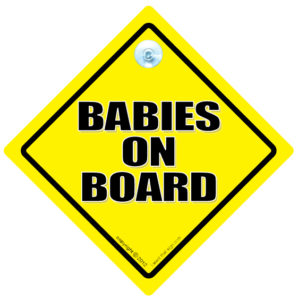Almost everyone, as a driver or passenger, has seen the “Baby on Board” sign in the back window of cars on our streets and highways. This sign is not only for other drivers on the road to know a child is in the car (so be extra careful), but it’s also for first responders. During an accident, that sign serves a pivotal purpose by letting EMTs and paramedics know that there is a child on board that may or may not be trapped in the vehicle. While the professionals know what to do once they arrive on the scene of a car accident, do you know what to do during and following? If you are involved in an accident where your child is injured, follow these important steps.
Stay Calm
An accident can cause blood pressures to spike and adrenaline to rush through the body creating momentary shock. For the child/children in the car, they are looking at you for guidance, so you remaining calm is the first step to making sure everything moves forward as smoothly as possible. If you’re able to move at all, get your car to the side of the road and out of the way of traffic to avoid any further damage to yourself or others.
Assess the Injuries
Children are more likely to appear absolutely fine at first. While this may give you peace of mind in the moment, it’s important to understand that it is also common for them to actually be suffering from internal injuries or injuries that may surface after an undesignated amount of time. If you notice your child acting differently following the accident, visit your primary care doctor or pediatrician. Typical noticeable actions would be excessive crying, restlessness, disinterest in toys, inability to eat or generally inconsolable. For these reasons, it is imperative that on the scene of an accident, medical personnel examine your child to reduce the risk of any immediate injuries becoming worsened.
Call the Police
While EMTs and paramedics are viewing your and your child’s injuries, it’s best to also call the police. Making a police report can become extremely helpful when determining fault or negligence. All paperwork filed pertaining to the accident should be kept on record for the longevity of a possible dispute. Make sure to give the police witness statements, timing of events and any information that may be used and needed in court documents. Provide contact information and try to get the contact information of all drivers involved. This allows for clear communication through all parties for insurance purposes as well.
Visit the Doctor & Report the Accident
Following the accident, it’s important to visit a doctor and report the accident to your insurance company. Visiting your doctor and your child’s pediatrician allows them to check into any injuries and see how any external or internal damages may be progressing following the accident. This visit will also help determine how much financial loss may have accrued from the accident itself. Informing your insurance company as soon as possible can alleviate the possibility of them not covering your accident fees. We suggest if dealing with an insurance adjustor at the scene or following the accident, it’s best to not sign anything or give them any statements.
Car accidents are traumatic events and for any child involved, they can be truly life-changing. When it comes to getting the help and service you deserve, you should call Stewart & Stewart Attorneys to represent you. We are Indianapolis accident attorneys that have experience with car accident cases involving children and will get you the money you deserve. No child should have to suffer because of the negligence of another person’s poor driving habits. For more information on what we can do for you and your child, please give us a call at 1-800-33-33-LAW or visit our website today.

